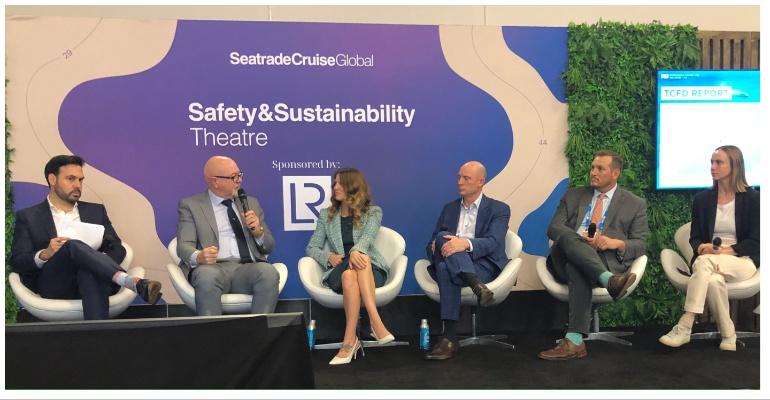But now that the push for widespread shore power is real, confusion abounds, a Seatrade Cruise Global panel on Sustainable Ports concluded on Wednesday.
“We are living in a transition period where not even the ports know what to charge to cruise lines,” for shore power, said Capt. Pier Paolo Scala, VP global port operations at MSC Cruises. “So they ask me how much do I charge you?”
Questions galore
Questions about standards, utilization, pricing and coordination between ports are swirling as the cruise industry looks at every alternative to meet increasingly stringent emissions targets in coming years.
Shore power involves cruise ships shutting down their engines in port and plugging into an electrical supply dockside. It saves fuel but, increasingly important, reduces greenhouse gas emissions and particulate matter.
Ports have been installing the gear, but lack of standardization means ships and ports don’t always use the same connectors.
Costly undertaking
Emily Bishop, senior director of sustainability at Norwegian Cruise Line Holdings, said that only a few companies in the world install the systems so the cost is rising “exponentially.” Grants like the ones enabled by last year’s congressional infrastructure bill are important,” she said. “Being able to reduce the upfront capital costs goes a long way.”
Ports hope to recoup their costs, but fear that cruise lines and other shippers won’t use them often enough if at all.
Pricing the electricity somewhere close to the cost of running engines in port is key, but electrical pricing schemes in some areas depend on wholesale power auctions, or zoned prices dictated by utilities or governments.
“We would like to see a more standardized system,” Scala said.
Bunkering facilities
The panel also discussed the need for other fuel solutions, such as LNG bunkering and bio-fuels availability, and stressed the need for ports to cooperate regionally to avoid overbuilding the capacity at excess expense.
Climate change
Apart from fuels, ports must also face resiliency issues as sea levels rise and weather becomes less predictable.
Rosemary Fusco, a research assistant in the Department of Marine Affairs at the University of Rhode Island, said a big opportunity exists to use nature-based solutions for strengthening ports against adverse weather, rather than engineered solutions.
One obstacle is showing the payoff. “Proving return on investment is harder than proving ROI on a hard engineering solution,” she said.
Multiuse terminals
The panel also agreed on the need to build cruise terminals with community uses so the carbon footprint of constructing and operating them can be amortized throughout the week and throughout the year.
Copyright © 2024. All rights reserved. Seatrade, a trading name of Informa Markets (UK) Limited.
Add Seatrade Cruise News to your Google News feed.  |

